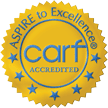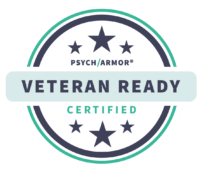Dealing With Seasonal Affective Disorder During Winter Recovery
 Shorter days, colder temps, gray skies – this time of year is tough for the best of us. And, if you’re one of the more than 10 million Americans with seasonal affective disorder (SAD), it’s even harder to manage. SAD is much more than the “winter blues” or “winter blahs” – it’s a mood disorder defined by a set of specific symptoms that return every year and last for four to five months.
Shorter days, colder temps, gray skies – this time of year is tough for the best of us. And, if you’re one of the more than 10 million Americans with seasonal affective disorder (SAD), it’s even harder to manage. SAD is much more than the “winter blues” or “winter blahs” – it’s a mood disorder defined by a set of specific symptoms that return every year and last for four to five months.
What Causes Seasonal Affective Disorder?
While researchers have yet to discover the exact cause, many studies suggest that the condition may be triggered by lack of sunlight. Here are some theories:
- Dopamine and serotonin: Reduced sunlight in the fall and winter months may create an imbalance of serotonin and dopamine, neurotransmitters that affect mood.
- Vitamin D: Lack of sunlight can also cause low levels of vitamin D, which is linked to depression.
- Melatonin: When the days are shorter and darker the production of this sleep-related hormone increases, which can impact sleep and mood.
- Circadian rhythm: Melatonin can also affect an individual’s circadian rhythm, or “biological clock,” which can interfere with sleep/wake rhythms. This can also cause symptoms of seasonal depression.
Recognizing the Symptoms of SAD in Recovering Individuals
Many of the symptoms of SAD can also occur with a co-occurring addiction and mental illness, making it even harder to spot the signs. If you or someone you love is experiencing any of the below symptoms, it’s best to consult with your addiction specialist for a proper diagnosis and treatment:
According to Mental Health America, symptoms of SAD include but are not limited to:
- Depression: diminished interest in activities, despair and apathy
- Anxiety: tension and inability to tolerate stress
- Mood changes: extremes of mood, including periods of mania in spring and summer for some individuals
- Sleep problems: difficulty staying awake or a desire to oversleep, disturbed sleep and early morning waking
- Lethargy: fatigue and inability to carry out normal routine
- Overeating: craving for starchy and sweet foods resulting in weight gain
- Social problems: irritability and desire to avoid social contact
- Sexual problems: loss of libido and decreased interest in physical contact
Dealing With SAD and Addiction
Fortunately, many of the same healthy habits that help your recovery can also help to prevent SAD. This includes:
- Increased physical exercise
- Practicing relaxation techniques like meditation, yoga and mindfulness
- Creating healthy sleep habits
- Spending more time outdoors
- Making time for hobbies and sober socialization
Staying Well at Seabrook
Seabrook is committed to helping all of our clients rid their bodies and minds of substance abuse and become the best version of themselves. To learn how we can help you better manage your addiction as well as any other co-occurring disorders like SAD, call us today: (888) 223-0298.



